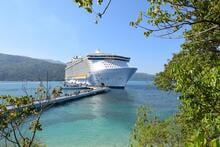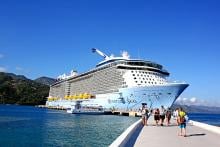No one wants to get seasick on a cruise, and I've discovered it really does matter where your cabin is located.
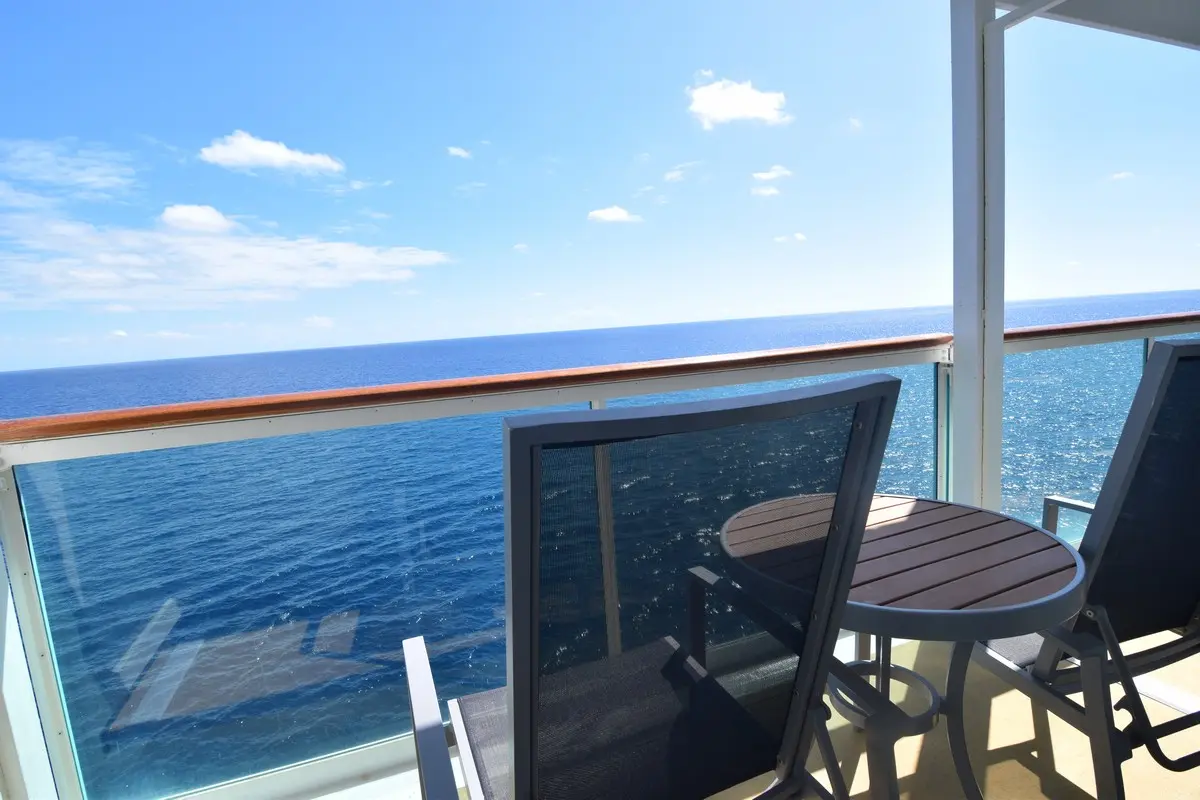
Over the years, I've gone on plenty of cruises and stayed in cabins across high decks and low decks, forward and aft, starboard and port side. Despite all my cruising, I still get seasick from time to time. I'd estimate one or two cruises a year it happens to me.
When the weather cooperates and the seas are smooth and winds calm, you won't even notice any movement and there are times you have to remind yourself you're on a ship moving through the ocean. But when the seas are swaying, it serves as a constant reminder.
Picking a cabin in a good location can have a significant impact on how much sensation you feel as the ship moves. In my experience, any relief is welcome.
Knowing which part of the ship has the least motion can not only lessen the chance of getting seasick, but also reduce any anxiety about it.
A cruise ship is like a seesaw
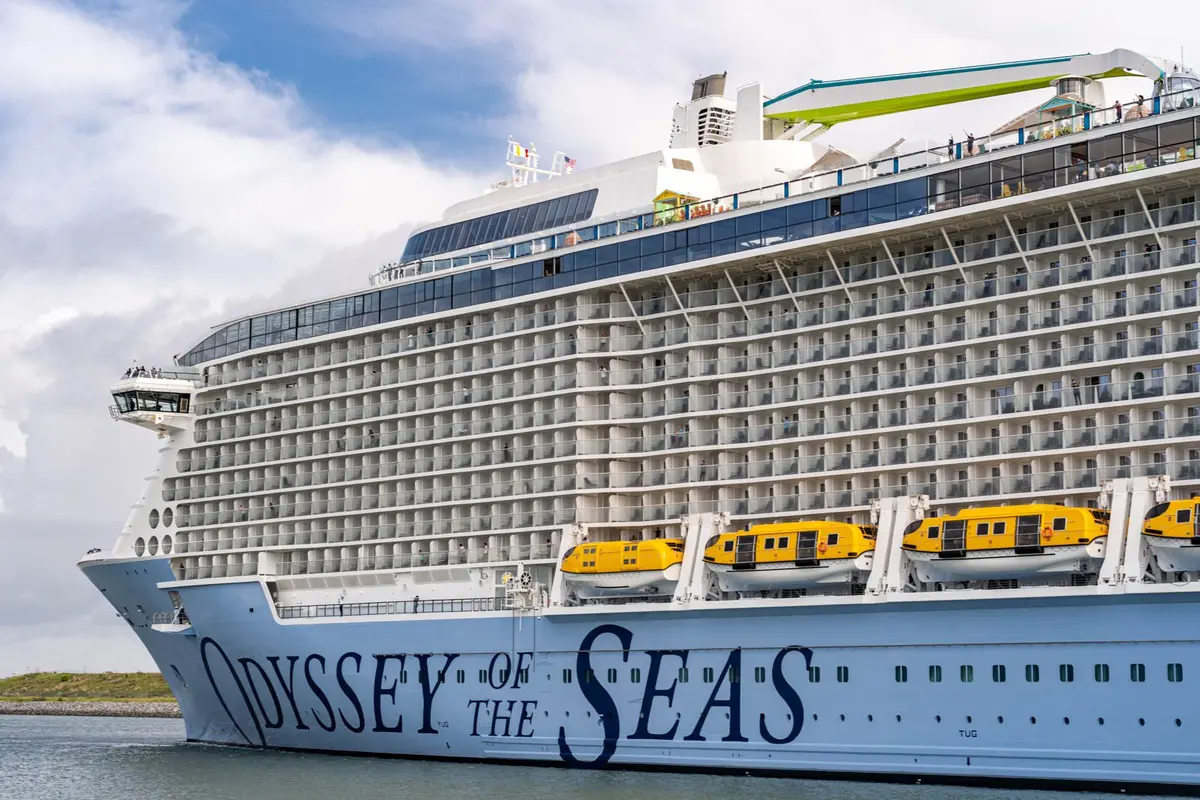
I think the chances of you getting seasick are pretty low to start with, but a lot of new cruisers are understandably worried about it because it's new to them.
The best analogy I ever heard about movement on a cruise ship is its akin to being on a seesaw.
If you imagine a seesaw, the least amount of movement is at the center, but the ends experience the most. By far the greatest movement is felt at the front and back of the ship.
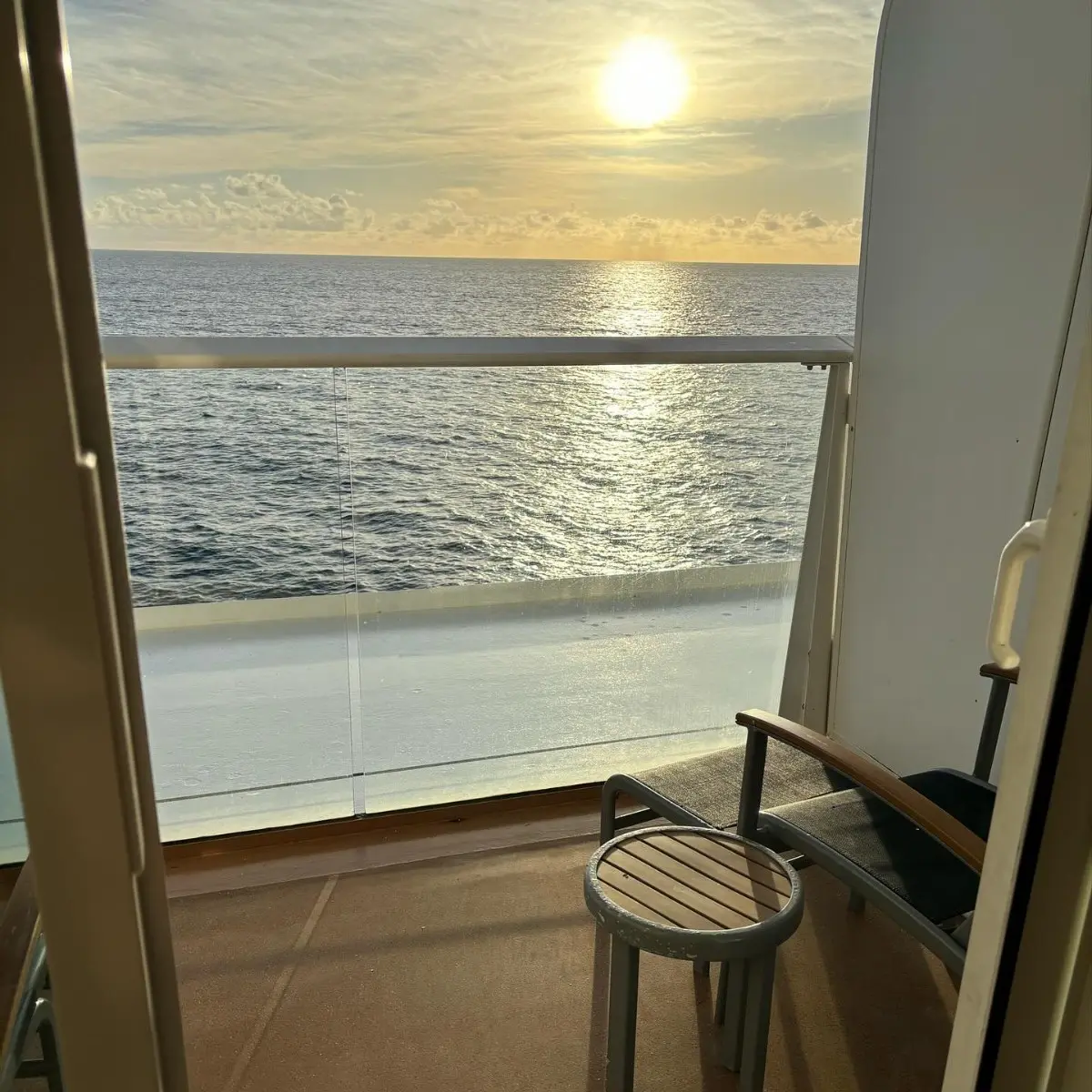
The deck you're on also plays a factor. Most experts recommend being on a low deck (instead of a high deck) because if the seas are rolling (side to side), then it helps being lower on the ship.
In short, being on a low deck and midship is the best spot to be in to minimize the feeling of movement. Royal Caribbean is known for building the biggest cruise ships in the world, so you don't have to worry about being on an old vessel that would truly be problematic. But of course, no spot is necessarily going to be immune to the movement.
Most people do fine as cruise ships are massive vessels that can deploy stabilizers to reduce rolling to tolerable levels in most situations. Unless you are highly susceptible to seasickness, you should be okay.
How each part of the ship compares
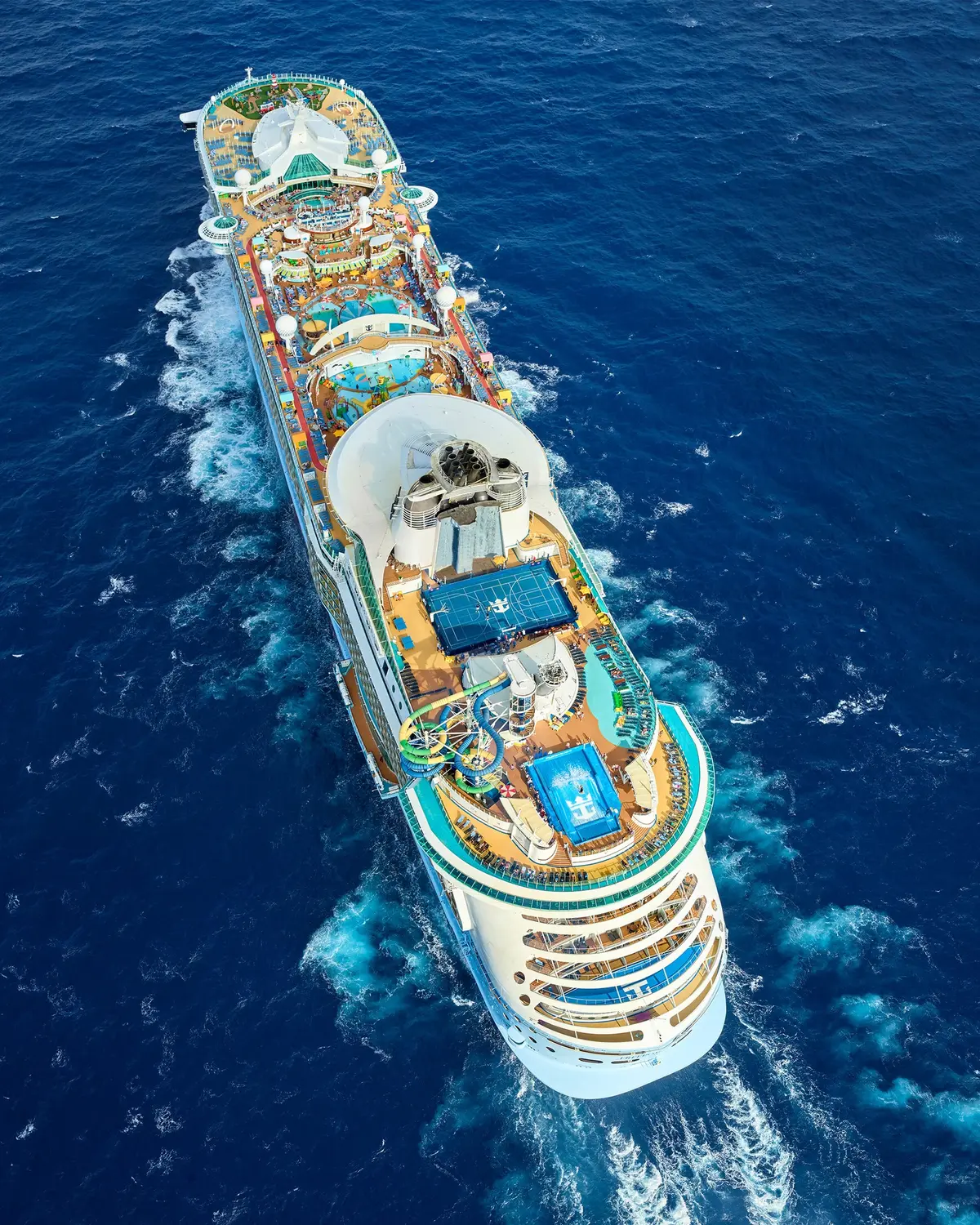
When you consider where your cabin is located, there are advantages and disadvantages to picking cabins in different areas.
Conventional wisdom says the best spot is a cabin midship and on a low deck, but what this advice doesn't take into consideration is the room type.
In almost all cases, your choice of staterooms on a low deck and mid ship is going to be either an inside cabin or an oceanview cabin.
These are usually the least expensive rooms to book, but they also lack space or amenities that you'll find in other room categories.
Besides being in an area with less movement, they're also near the middle elevator bank, and that's convenient for simply getting around the ship.
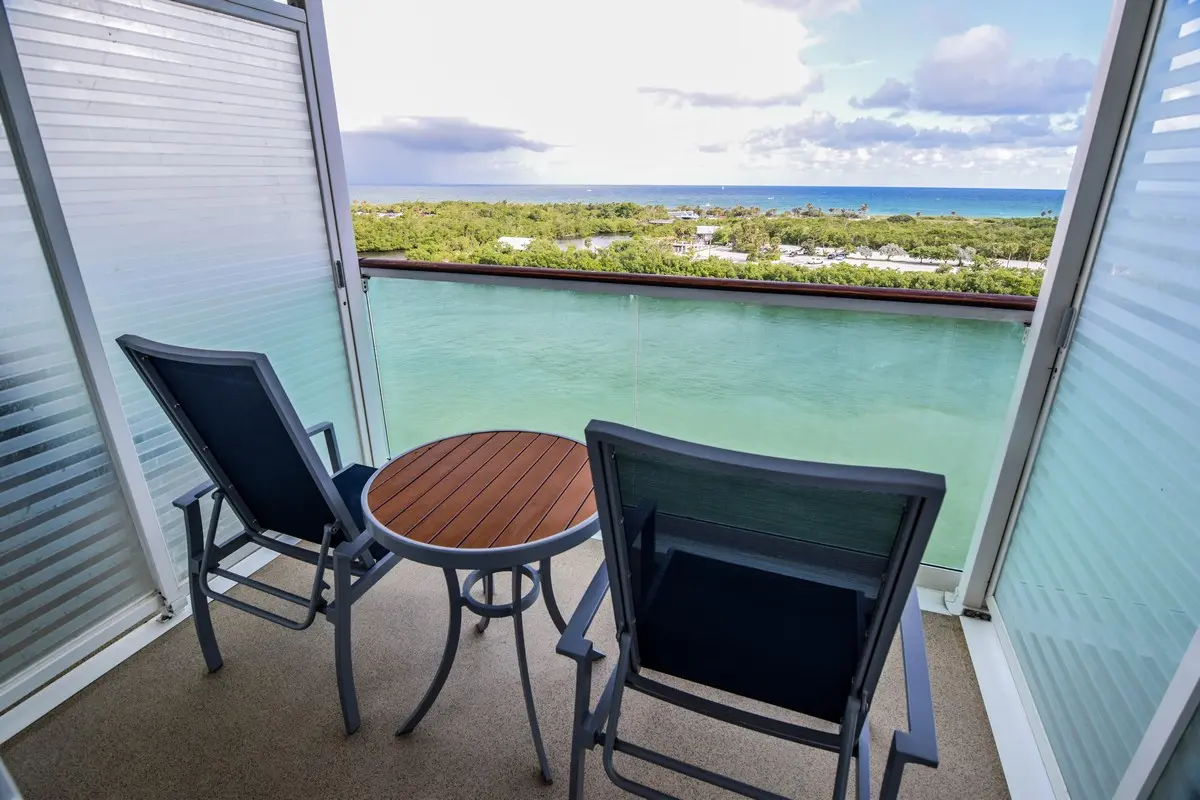
If you want a balcony or suite, you're going to need to move to the upper decks.
Royal Caribbean begins offering cabins with a private balcony about halfway up the ship, sometimes as low as deck six. The higher up on the ship, the better the view you'll have.
However, if you compared the sensation of movement on deck 10 vs deck 2, you'd likely find it better on the lower deck.
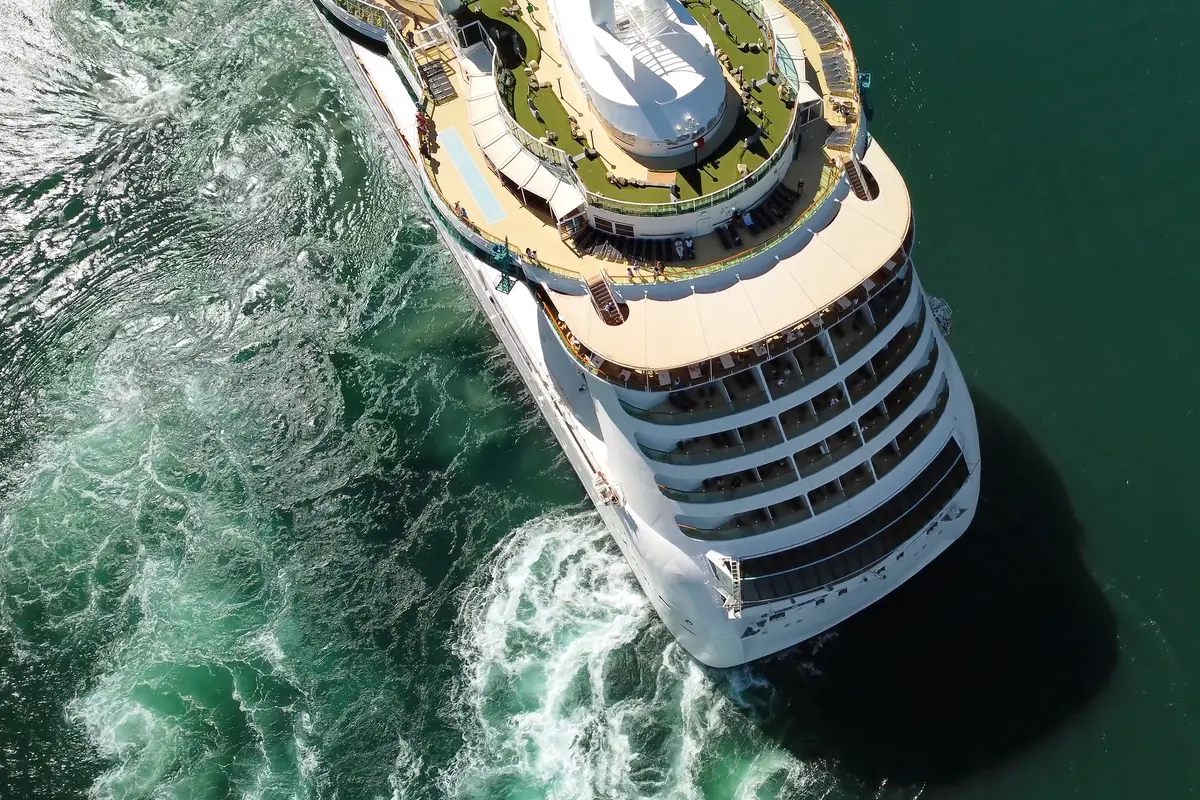
Deciding between the front or back of the ship also plays a factor.
People that cruise a lot tend to love picking cabins on the back of the ship for the amazing views you can get. Keep in mind, they mean cabins that face backwards, and not cabins that are still on the side of the ship, but towards the rear.
Some special cabins at the very rear corners of a ship might even feature a balcony that wrap around the vessel in an L-shape, giving you views on two sides.
Movement at the back can feel like you're going up and down.
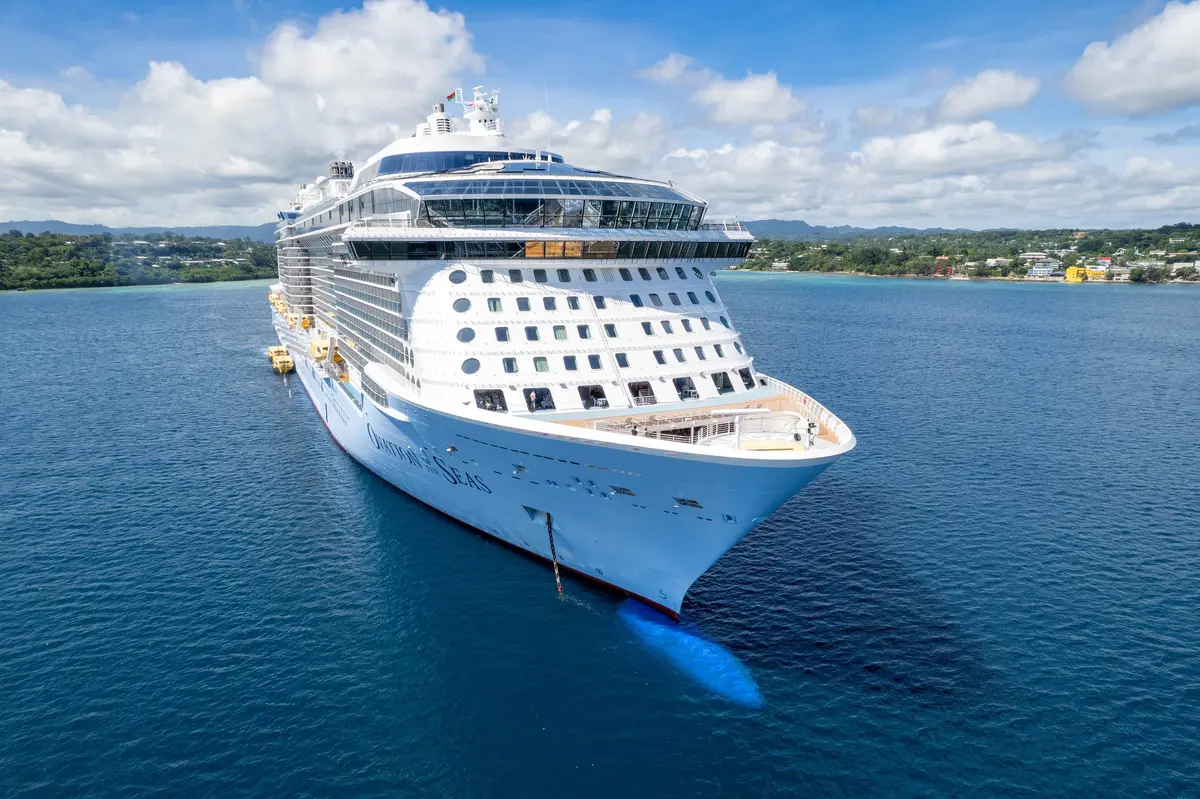
Taking a cabin at the front is like being in the front seat of a car. It has great views of what's coming up, assuming your cabin faces forward.
I think cabins at the very front are the worst for risk of movement. The higher the deck, the more noticeable that rolling and swaying motion tends to feel.
Because this part of the ship is what's encountering the waves first and it's far from mid-ship, it seems to always generate the sensation of seasickness in me the most.
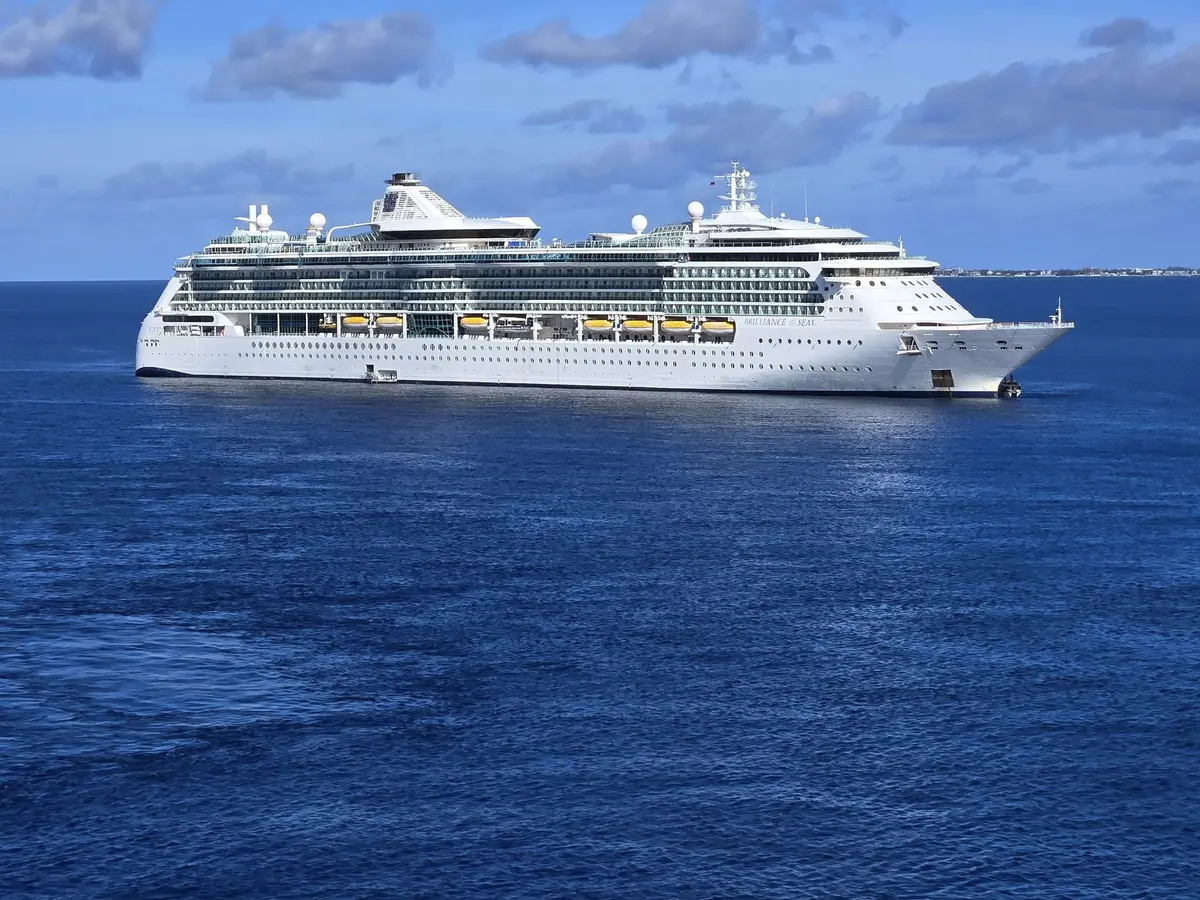
Of course, these are generalizations based on my cruises. Everyone's body handles it differently and the weather will play a major role in how good or bad the sea conditions are.
Picking a cabin midship is still the best advice if you're worried about getting seasick
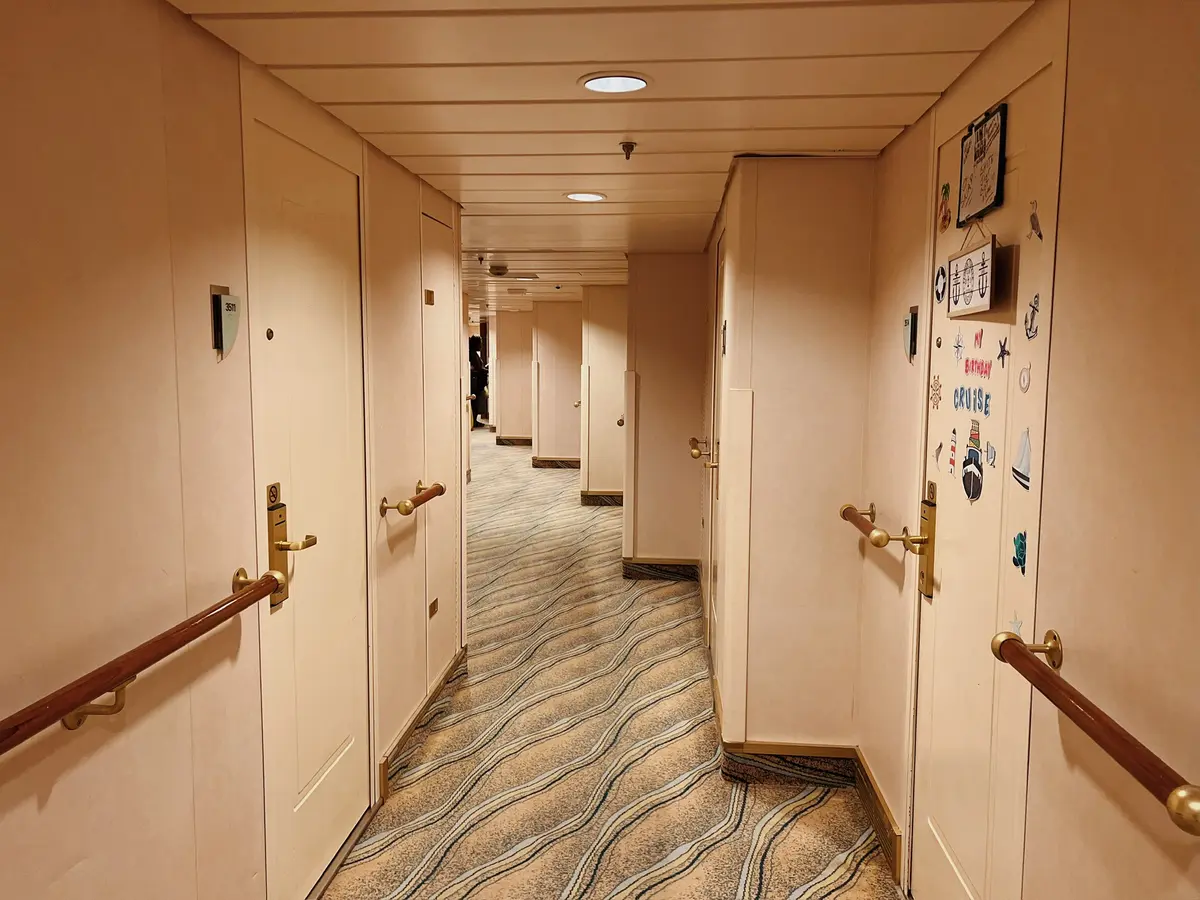
Sometimes conventional wisdom is outdated, but I think picking a cabin towards the middle of the ship still makes the most sense.
When I try to save money and go with a guarantee cabin that puts me towards the front, I usually regret that decision if the seas are rough.
In those situations, I'll be in the ship's casino or a restaurant that is mid ship and then go back to my cabin to suddenly feel the difference.
You probably won't even get seasick, but if you have the choice in where your room is located, picking one midship helps with that. Plus it's just more convenient to get around.
Staying in a balcony can help too
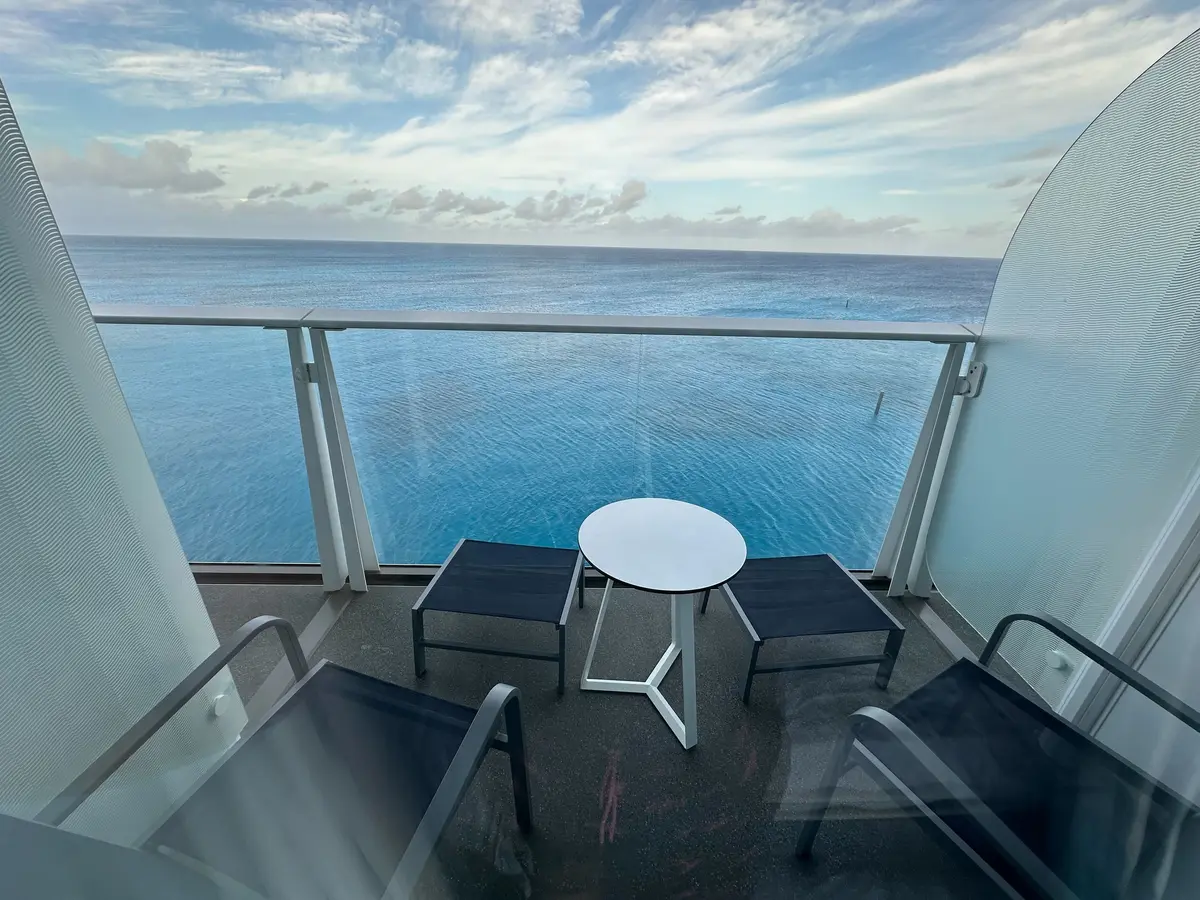
While your room location is a factor, I also think being in a room that has access to a private verandah helps too.
Being able to see the horizon and having access to fresh air are two things that can settle your brain if there's movement.
It helps me to have fresh air if I am feeling seasick.
To be fair, if you were in an interior room you could go out to a public deck and achieve the same thing. But if I'm feeling miserable, I'd rather be in private.
Prepare for seasickness with the right remedies
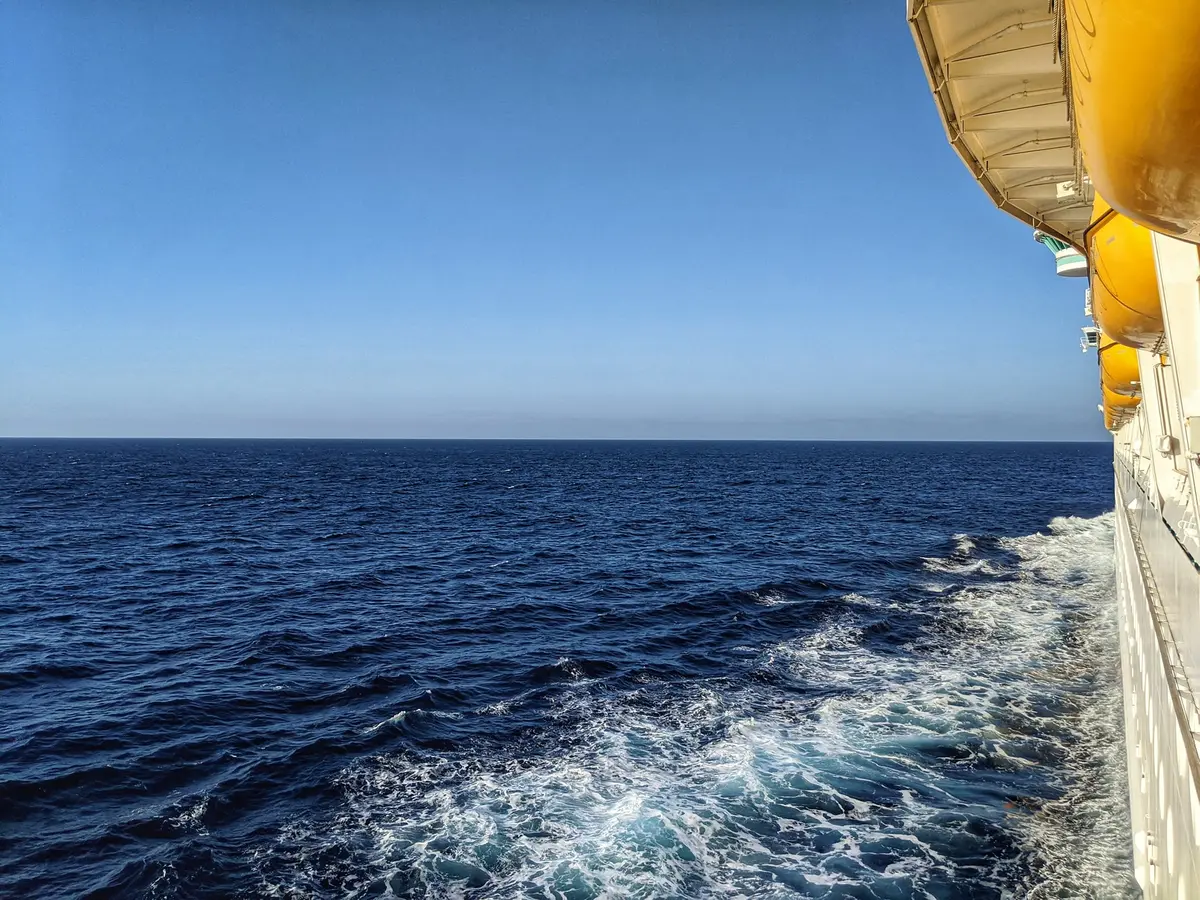
No matter which stateroom I book on any deck, I'll always bring the right seasickness medication with me.
I prefer to rely on over-the-counter medications to help and I always pack Bonine. (This is an affiliate link, which means I get a small commission if you buy from it, but it costs you nothing extra)
There are other medications you could take, such as getting a prescription before the cruise from your doctor for scopolamine, which is a patch behind your ear that you wear throughout the cruise. Benadryl also works for some people.
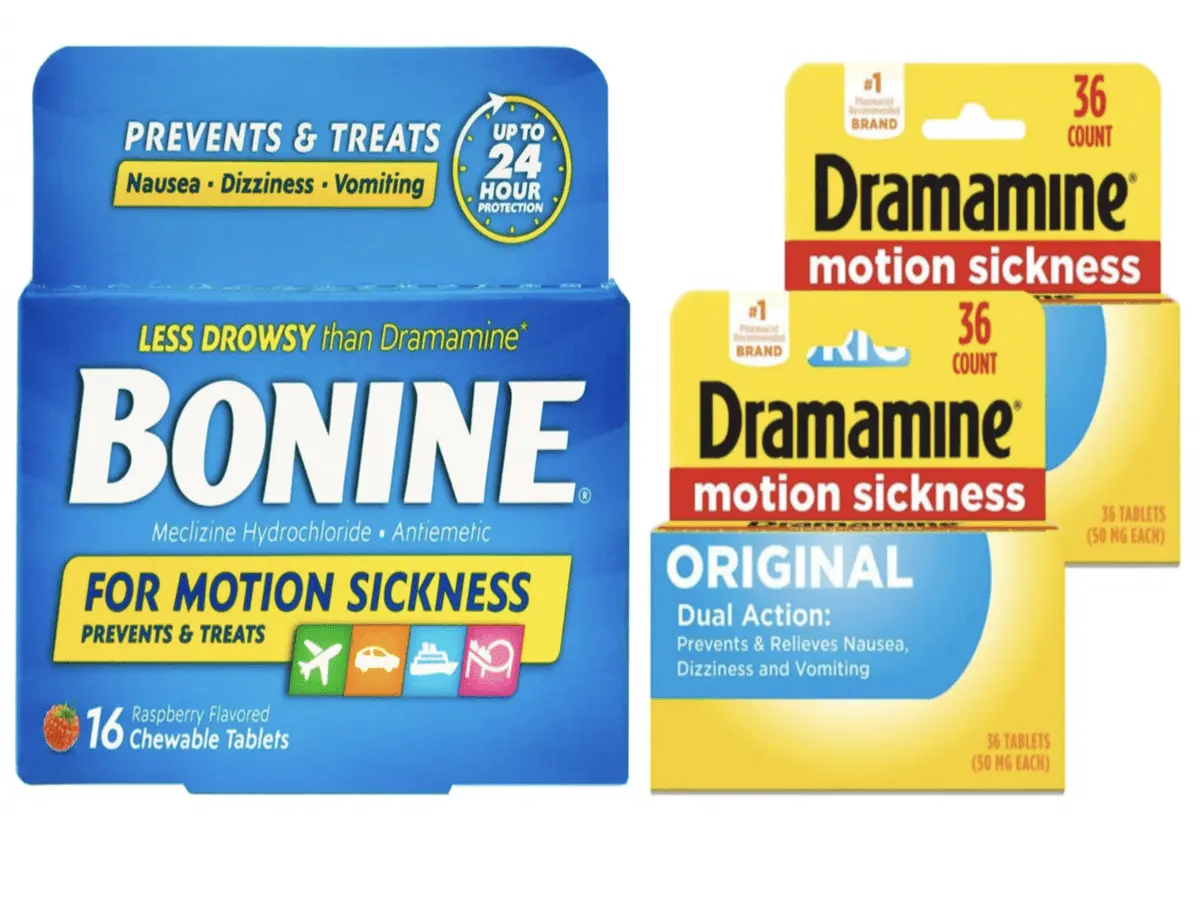
Be sure to bring your own medications with you, because the ship may or may not offer them onboard. And even if they do, I'm betting it's going to be cheaper at home.
Something else that can work well is to consume ginger.
Ordering a ginger ale or taking a ginger supplement helps. You might also consider going to the Windjammer and see if you can find green apples, peppermint tea, or even a lemon. Everyone's physiology is different, and these can assist in reducing the symptoms.




